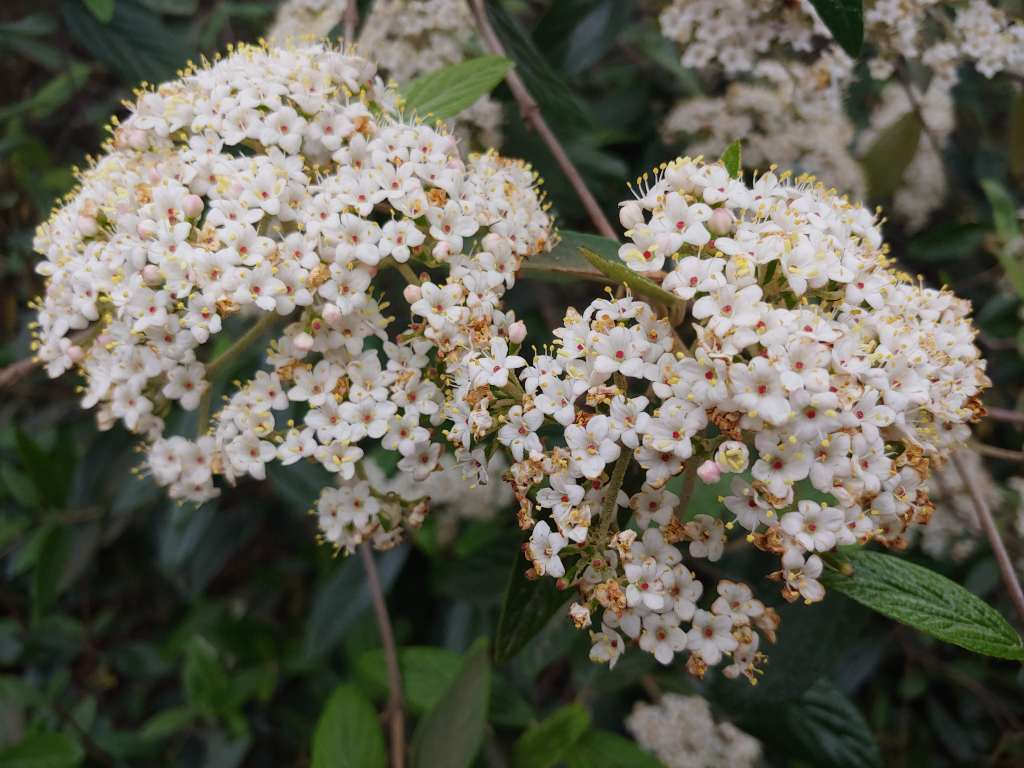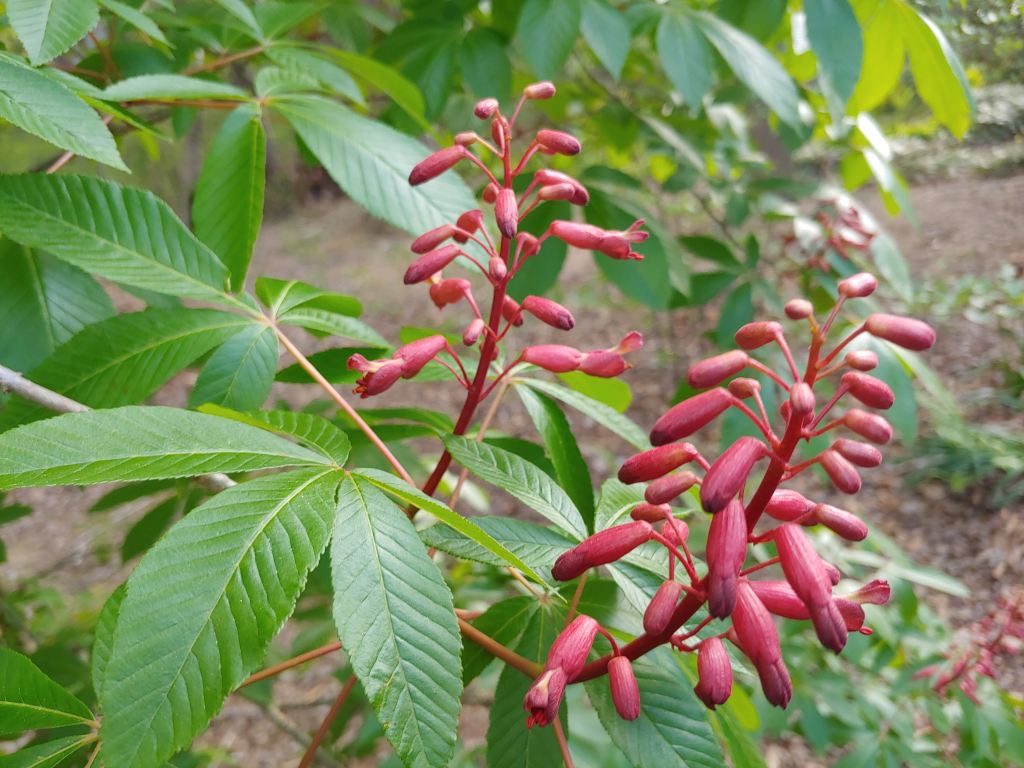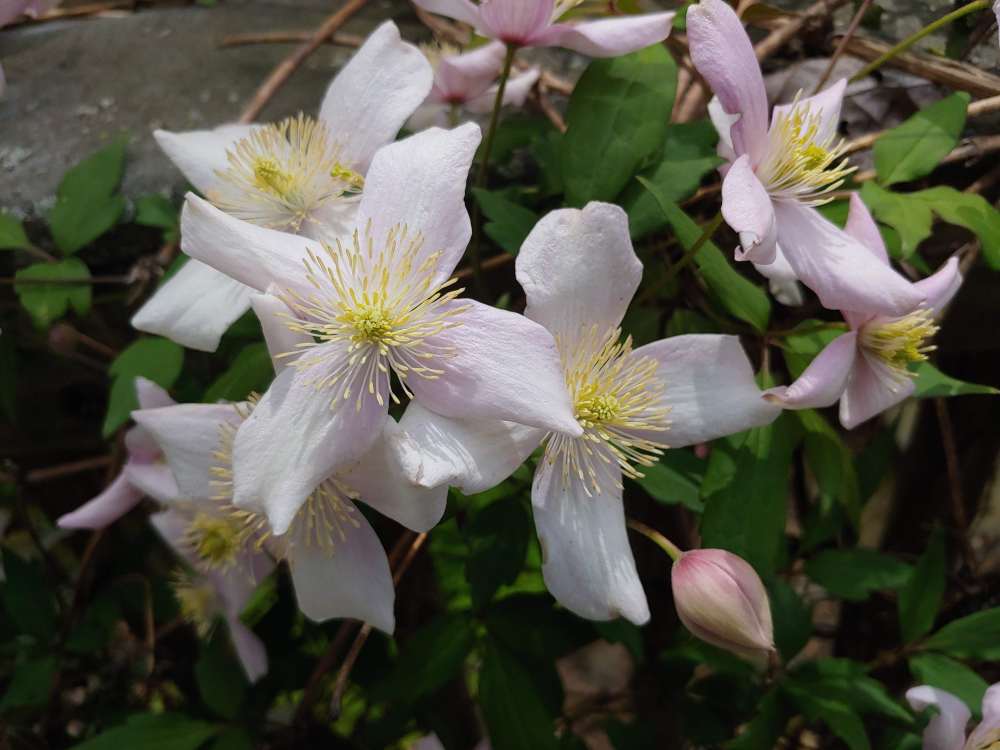An evergreen Pragense viburnum (Viburnum x pragense, below), once planted at the forest’s edge twenty-five years ago, has long been relegated to deep shade behind the tall and wide spreading ‘Merrill’ magnolia. Miraculously, it survives, though at a fraction of its once formidable size and with many fewer blooms. A nearby Korean Spice viburnum (Viburnum carlesi) is nearly gone, and with no flowers. Certainly, the viburnums’ exile to parts rarely seen was unintended, and long ago I realized that the long term in the garden will involve a number of comings and goings.

Practically, there is also a pecking order, and I would never consider jamming something beside or in front of ‘Merrill’, to risk obstructing its marvelous early spring blooms. Two shrubby trees also along the forest’s edge, the Red buckeye (Aesculus pavia, below) and white Bottlebrush buckeye (Aesculus parviflora) are planted in close proximity, but the red buckeye is planted prominently while the white is shoehorned behind three beautyberries (Callicarpa americana). It can be seen, but the preference for the red flowered shrub is evident. With proven durability, two small bottlebrush buckeyes were recently planted in ever damp ground behind the garden’s shed, so while less appreciated for its beauty, the bottlebrush is recognized for its utility.

Surprisingly, since it is quite cold hardy, a vigorous pink flowered clematis (Clematis montana ‘Rubens’, below) suffered considerably in a freeze several years. While it did not die, several stems were killed, and only now has it substantially recovered. This clematis grows like a weed by the typically modest standards of clematis growth, and this one is perfectly sited, covering the railing of the deck as we look out the kitchen window.

The clematis replaced an overly vigorous akebia vine that was determined to take over the deck, and if it had not been removed it would have overwhelmed all nearby shrubs. I am happy to this day that it was dug out, and I am more than a little crazy to allow two tiny seedlings to remain in deep shade to the far side of the deck. So far, the small vines are not running rampant, and I continue to watch carefully in case they gain additional vigor. Akebia is a highly ornamental vine, and slowly up into the branching of a tall, open branched cypress would be ideal, but I worry.

Maybe a variegated Akebia would be less aggressive? (Just planted one of these)
https://nurcar.com/products/akebia-quinata-variegata?_pos=1&_sid=0864d7382&_ss=r
I’ve recently planted a yellow leafed Fallopia to replace a passionflower that is fading. I hope that it proves less vigorous than the green leafed version, but I plan to cut it to the ground annually. I’ve started seed on Cardinal flower and Hyacinth vines that I must find a place for, but the variegated akebia could be a good choice in the right spot.
Is that a white spruce that the akebia is leaning on now in the last picture?
Yes. Alberta white spruce. A hazard of staying in a garden so long is that even somewhat dwarf plants over grow, so it was removed when it grew to obstruct the path.
Oh, I would not have guessed that. It looks like a white spruce, but not a dwarf version of it.